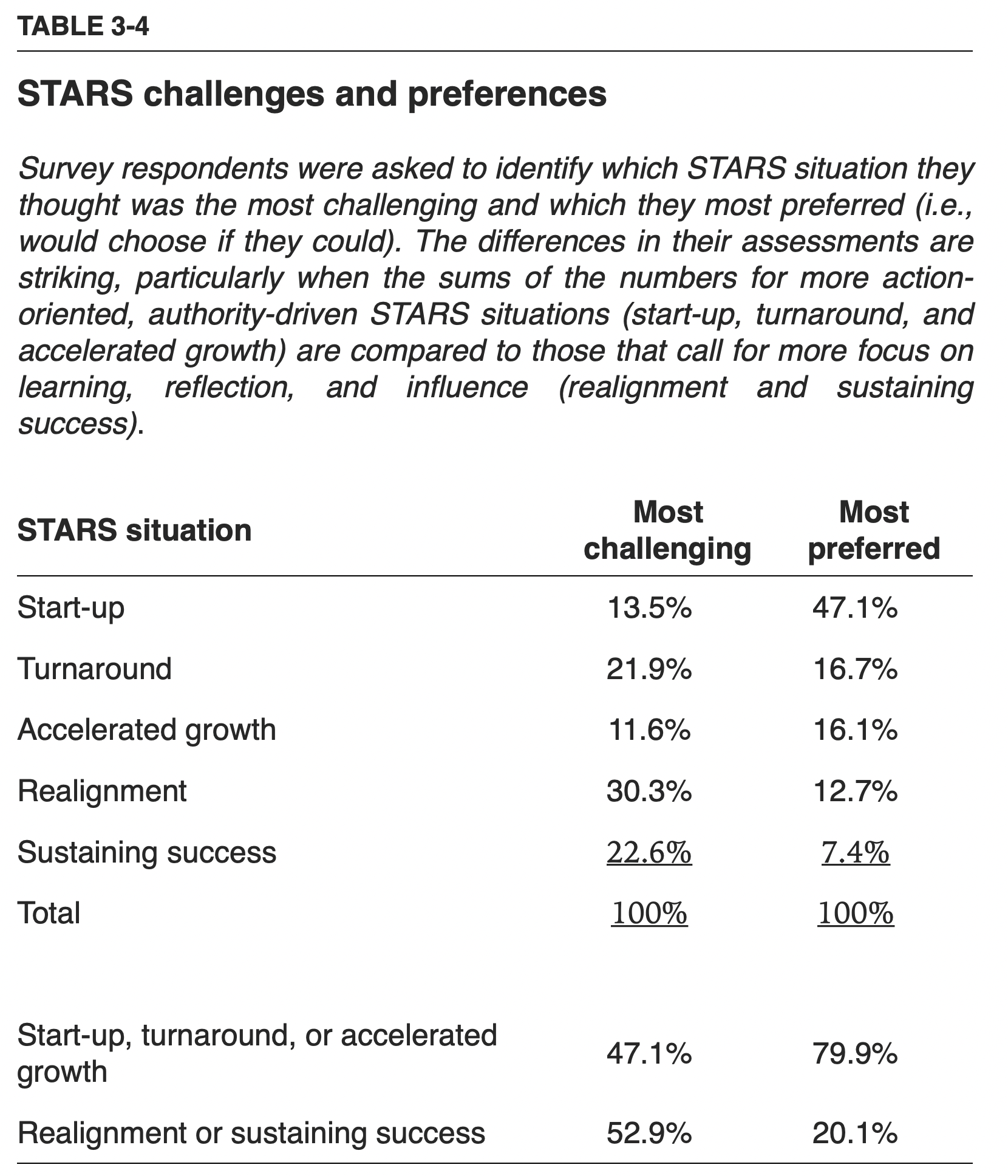The First 90 days, Updated and Expanded - Proven strategies for getting up to speed faster and smarter - 11
“Whether any leader in transition can adapt her personal leadership strategy successfully depends greatly on the ability to embrace the following pillars of self-management: enhancing self-awareness, exercising personal discipline, and building complementary teams.”
自我觉知,践行原则,简历互补的团队。领导者要随时能够内视自己的行为,以及带来的结果,并不断反思调整,并适当地把这些反思坦诚的和团队聊。同时,要践行自己的原则,比如下班后就不发消息,不回消息。以及对自我的短板、以及团队每个成员的短板很清楚的认识,通过构建合适的团队,来相互弥补。
“The results, summarized in table 3-4, are illuminating. The most challenging situation was assessed to be realignment, followed by sustaining success and turnaround. Start-up and accelerated growth were assessed as being significantly easier. However, when it came to preferences, the pattern reversed, with start-up being (by far) the most popular, followed by turnaround and accelerated growth. This is not a surprising finding, and the underlying reasons are revealing. It is not the case that people are drawn to the easy situations. Rather, they are drawn to situations that are (1) more fun and (2) get more recognition. A successful start-up is a visible and easily measurable individual accomplishment, as is a successful turnaround. In a realignment, in contrast, success consists of avoiding disaster. It is hard to measure results in a realignment when success means that nothing much happens; it’s the dog that doesn’t bark. Also, success in realignment requires painstakingly building awareness of the need for change, and that often means giving credit to the group rather than taking it yourself. As for rewarding sustaining success, people seldom call their local power company to say, “Thanks for keeping the lights on today.” But if[…]”

start-ups和turnarounds最容易看出成果。accelerated-growth次之,最不想做realignment以及sustaining-success因为他们基本没有外部的动力,相当于没有天时地利人和,需要创造需求或者是不断影响让大家居安思危。